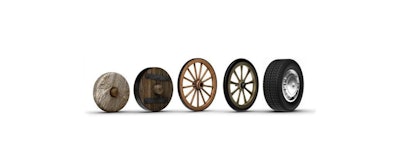
Good news! Your supplier has just announced a new product line or an improved version of a long-established product line! Your salespeople have something new to sell! Yay!
But the manufacturer is stopping production of the old product line, effective almost immediately. Ouch! And it will not take back any of your existing inventory on this old product line. Double-ouch!
What about your customers who use the old style product line and do not want to change (or cannot, at least right away)? And what about all of that inventory of the old style product that you still own?
When a manufacturer retires an old product line, to be replaced with a new one, distributors are faced with three near-term challenges:
- What to do with existing inventory of the about-to-be-retired product line
- How to serve existing customers who still want/need the old product line
- How to minimize the risk of investing in speculative inventory of the new product line
Formalized “inventory-sharing” among peer wholesaler-distributors can help mitigate these challenges. Here is how:
What do do with your existing inventory of the about-to-be-retired product line
As your salespeople successfully migrate your existing customers to the new product line, local demand for the old products will decline. By making your remaining inventory available to a network of peer wholesaler-distributors, you are effectively expanding your sales territory beyond its traditional boundaries, perhaps to an entire continent- or the entire world. Formalized “inventory-sharing” with peer wholesaler-distributors can expose your inventory to thousands of additional end-customers who might still want to use the old products.
How to serve your existing customers who still want/need the old product line
Leverage inventories of the about-to-be-retired product line that is available from peer wholesaler-distributors. Your peers are likely to own inventory that they are eager to unload, at very attractive prices. Participating in a formalized “inventory-sharing” network gives you easy access to who has what, and at what price.
How to minimize your risk of investing in speculative inventory of the new product line
Whether incentivized (or pressured) by the manufacturer, or motivated by optimistic forecasts by your sales team, you will likely place speculative stock orders for items in the new product line. These are items that your company has never sold before. Yikes! To minimize the risk of this investment, expose this new inventory to as large of an audience as possible. That is, offer it for sale to peer wholesaler-distributors in a formalized “inventory-sharing” network. Not all of your peers will place speculative stock orders. Many will be scrambling to fulfill new backorders that their sales teams dragged in. Factory lead time is factory lead time. Your inventory is available for shipment today. In these cases, end-customer satisfaction should take priority over acquisition cost, allowing you to sell to a peer wholesaler-distributor your newly acquired inventory at a profit.
 Mark Tomalonis, Pricipal of WarehouseTwo
Mark Tomalonis, Pricipal of WarehouseTwoAfter a successful career in sales and operations management in the wholesale-distribution industry, Mark Tomalonis is now principal of WarehouseTWO, LLC. He amuses himself by writing articles, such as this one, to help wholesaler-distributors execute their operations better.






















